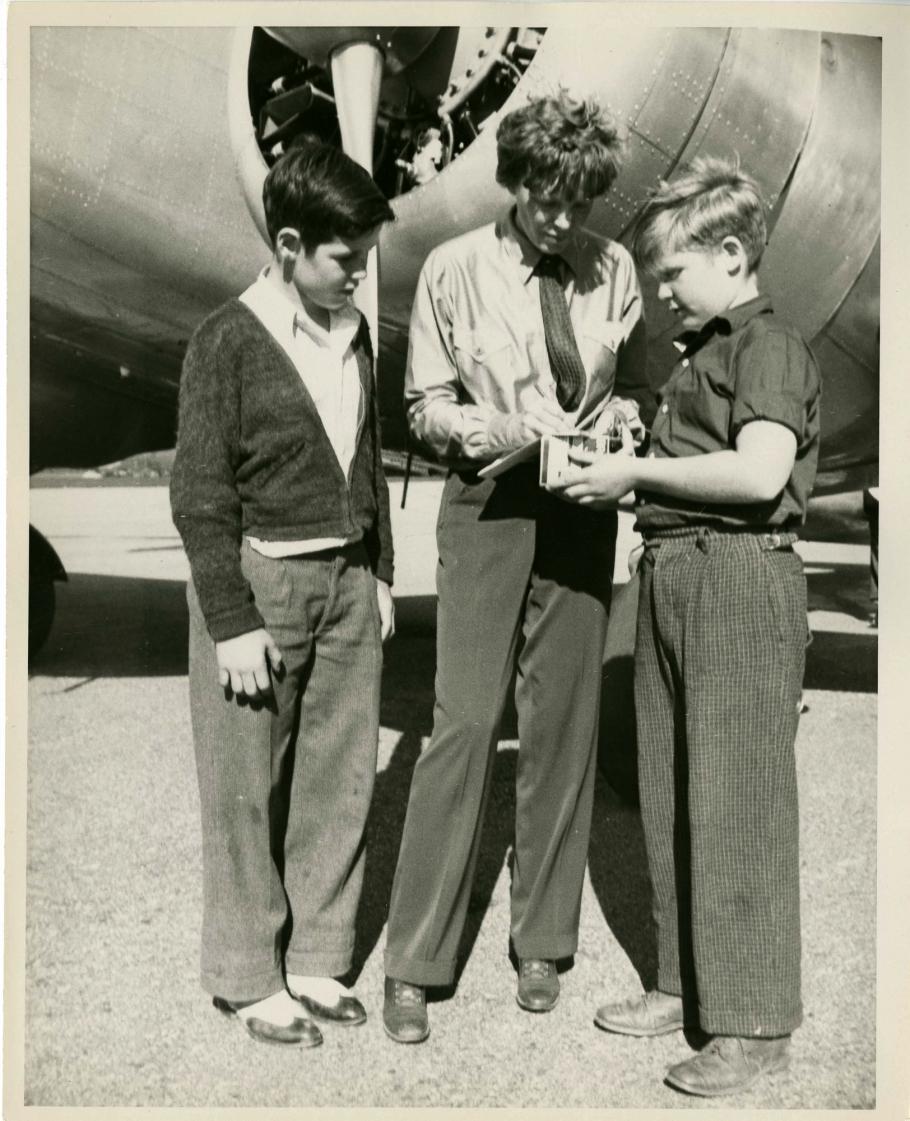Amelia Earhart: Missing for 80 Years But Not Forgotten

On May 21, 1937, record-setting pilot and celebrity Amelia Earhart set out to become the first woman to fly around the world. By July 2, she and her navigator, Fred Noonan, had flown more than 35,406 kilometers (22,000 miles). They intended to make three final but long over-water flights across the Pacific Ocean to complete the voyage: from New Zealand to Howland Island, Howland to Hawaii, and Hawaii to San Francisco, California. Instead, they disappeared en route to Howland Island.
What we know from official US government records:
Amelia Earhart and Fred Noonan departed Lae, New Guinea, at 1000 (10:00 am) local time on July 2, 1937, for a 4,113-kilometer (2,556-mile) easterly flight to Howland Island. She expected to fly a minimum of 18 hours and arrive around sunrise.
The Coast Guard cutter Itasca waited with fuel at Howland Island, which is 3 kilometers (2 miles) long and 1.6 kilometers (1 mile) wide. From 0245 (2:45 am) to 0845 (8:45 am) local time on July 2 (across the International Date Line), the radio operators received Earhart’s intermittent voice messages. Her radio signal strength progressively increased, indicating that she was getting closer to Howland.
Due to a combination of confused communications plans and the inability of both Earhart and Noonan to use Morse code (a fact not known by the crew of the Itasca), Earhart and the Itasca never made two-way voice or telegraph contact, which would have been very helpful in guiding her to tiny Howland Island. It appears she may never have heard any of the Itasca’s transmissions.
The Itasca received Earhart’s strongest radio voice signal at 0758 at a strength of 5+, very good reception. She was circling and searching and running low on fuel. The Itasca received Earhart’s last transmission at 0843 at a strength of 5, still good reception. Then, no one heard from Earhart again.
Years earlier, before her 1928 transatlantic flight as a passenger, Earhart wrote a practical farewell note to her sister Muriel in case of tragedy. It became espeically poignant after she went missing.
I have tried to play for a large stake and if I succeed all will be well. If I don’t I shall be happy to pop off in the midst of such an adventure.
The US government conducted its largest ever search for a lost aircraft from July 2 to July 18 but found no trace of the crew or the Lockheed Electra aircraft. At first, unsubstantiated radio calls fueled hope that she and Noonan were still alive. Eventually numerous disappearance theories arose and continue to this day. Searches continue as well. But, for now, Earhart and Noonan’s final resting place remains unknown.
So Who Was Amelia Earhart?
In short, Amelia Earhart was:
- One of the most famous flyers of her day.
- A record-setting pilot.
- A promoter of aviation.
- A media star and celebrity.
- An inspiring role model for women.
- The tragic legend at the center of an enduring mystery.
This is the snapshot we offer next to Earhart’s Lockheed Vega aircraft in our Barron Hilton Pioneers of Flight Gallery at the Museum in Washington, DC.
Her accomplishments and her shortcomings make her worth remembering; read about them on our online exhibition for Pioneers of Flight or in our brief biography of Earhart.
She left a legacy that challenges and inspires. She was not the “best” pilot, but she had the courage and drive to make another flight or reinvent herself when required, and, with the help of George Putnam, she excelled at public relations. Defying gender roles, she built an unorthodox career in a man’s world; earned the Distinguished Flying Cross; was a compelling force for aviation and for women’s rights; diversified her career with lectures, writing, and business ventures; and consistently made the Most Admired and Best Dressed women lists - a complex combination that allowed her to have a real and lasting impact. All told, her flying career, feminism, life, and death are subjects of countless books, articles, plays, movies, student essays, ad campaigns, public inquiries, and features like this. Yes, we do want to know what happened to her. Why? Because Amelia Earhart dared to be different.
Related Topics
You may also like
Related Objects
We rely on the generous support of donors, sponsors, members, and other benefactors to share the history and impact of aviation and spaceflight, educate the public, and inspire future generations. With your help, we can continue to preserve and safeguard the world’s most comprehensive collection of artifacts representing the great achievements of flight and space exploration.
